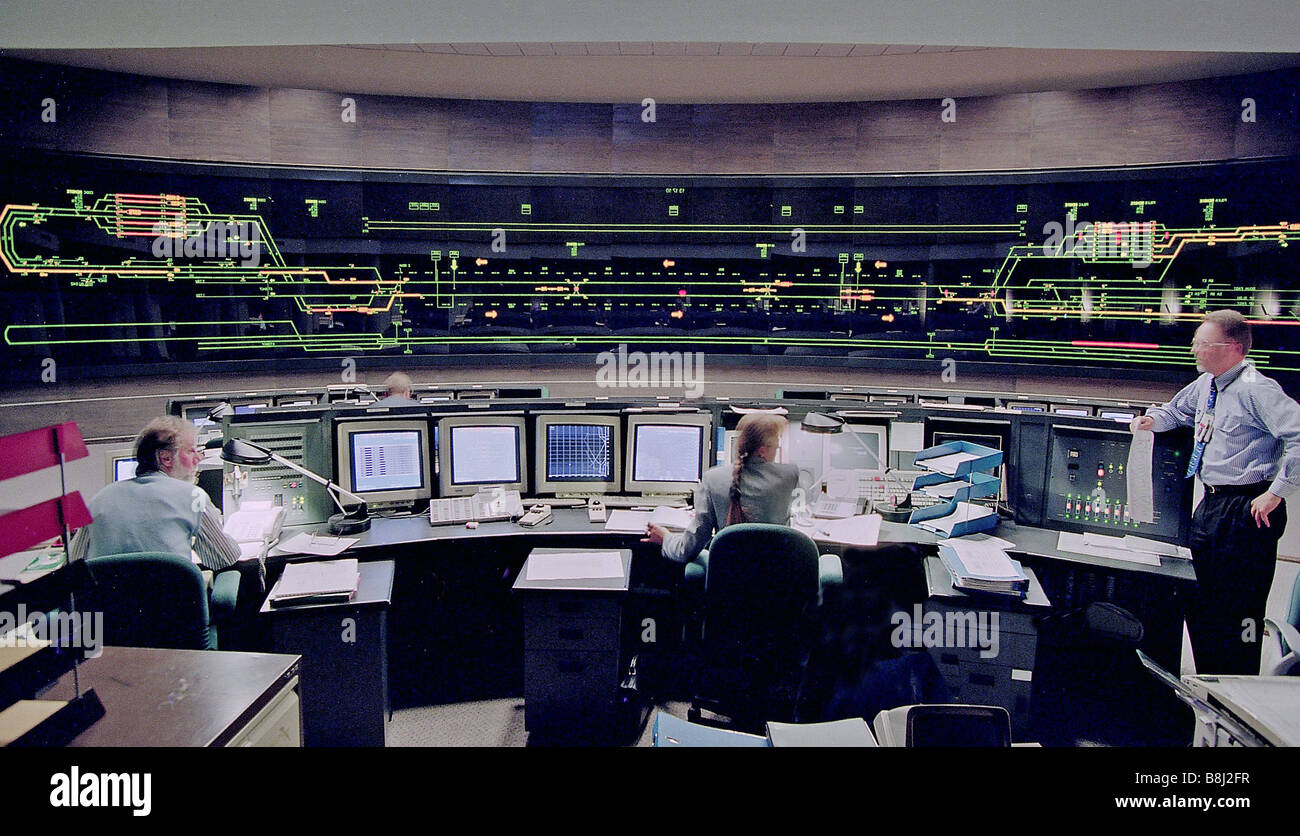The Channel Tunnel is a complex and busy railway and the Folkestone Contol Centre has prime responsibility for the entire system

Image details
Contributor:
qaphotos.com / Alamy Stock PhotoImage ID:
B8J2FRFile size:
9.5 MB (857 KB Compressed download)Releases:
Model - no | Property - noDo I need a release?Dimensions:
2401 x 1378 px | 40.7 x 23.3 cm | 16 x 9.2 inches | 150dpiDate taken:
16 March 1995Location:
Eurotunnel Terminal, Folkestone, UKMore information:
This image could have imperfections as it’s either historical or reportage.
The Rail Control Centre at Folkestone's UK Terminal has primary responsibility for the world's busiest rail system. If it should develop problems, responsibility can be instantly switched to a similar Control Centre in Calais. To ensure the necessary levels of safety, security and service, the controllers assume responsibility for rail traffic, road traffic and provide a focal point in the event of an accident or incident. The Channel Tunnel is no ordinary project. The four types of cross-channel service that the Tunnel offers - conventional freight and passenger trains, plus two types of road vehicle shuttle have made it into the busiest railway in the world. The fast and efficient movement of road and rail traffic into, through and out of the Eurotunnel system is integral to that success. The Channel Tunnel is one of the wonders of the modern world. It is thirty-two miles long at an average depth of 45 metres below the sea-bed, the longest undersea tunnel and the second longest rail tunnel in the world (only the Seikan Tunnel in Japan is longer). It was built between 1987 and 1994 by Anglo-French consortium TransManche Link and is owned and operated by Anglo-French Eurotunnel plc. It opened for business in late 1994, offering services including a shuttle train for car, coach and freight vehicles, a Eurostar high-speed passenger service linking London with Paris and Brussels and a rail freight service. The tunnel boring machines were specially designed for excavating the chalk marl rock which lies beneath the seabed along the tunnel route. Digging the tunnel took 15 thousand workers around 170 million man hours over 7 years with tunnelling happening simultaneously from both ends. The Channel Tunnel consists of three parallel tunnels. There are two rail tunnels carrying trains to and from the UK to France and a smaller access tunnel served by narrow rubber-tyred vehicles and connected by transverse passages to the main tunnels at regular intervals.